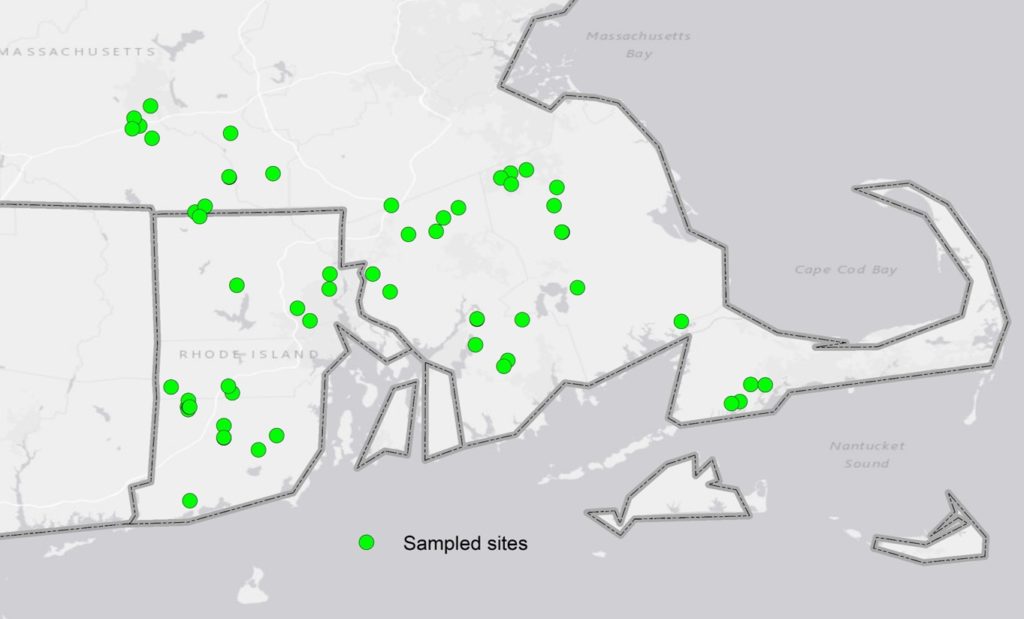The Bugs Tell the Tale

A scientist wades into a slow-moving stream and brushes one square meter of the stream-bottom surface into a net.
The procedure collects large invertebrates—mostly insects—for study. These bottom-dwelling animals are good indicators of stream health over time. There are many species, and some tolerate pollution better than others.
Other field workers assess key aspects of the habitat on a 20-point scale using observations and physical measurements.
This work, performed at 54 sites in Massachusetts and Rhode Island, ended last month. The one-time survey will provide the basis for an index of biotic integrity that can be used to track and monitor the health of the shallow, non-tidal streams in Rhode Island and southeastern Massachusetts.

Scientists selected both healthy and degraded sites to develop an understanding of the relationships between habitat quality and species health.
Invertebrate populations are sensitive to conditions over time and provide information about the health of a stream beyond a simple one-day snapshot. Biological sampling provides insight into the expected macroinvertebrate populations in the region. A habitat survey provides information about their habitat.
Monitoring Yardstick
Putting these two surveys together can create a yardstick for stream health in the region, based on the populations of different species. An abundance of species that are sensitive to impairments, such as low dissolved oxygen, correlates to a healthy ecosystem. If their ecological niche is filled by a more-tolerant species, an impairment is indicated.
The careful calculation of these and other correlations will allow scientists to assess the ongoing health of stream ecosystems by sampling macroinvertebrate populations there.
The project of creating an index of biotic integrity for this area is being conducted by Tetra Tech under a grant administered by NEIWPCC’s Water Quality Division. The funding is from the EPA’s Southeastern New England Program.
Rhode Island and Massachusetts environmental departments are providing technical support.
Analysis of the samples, and creation of the index, will likely take another year.
iWR • October 2019